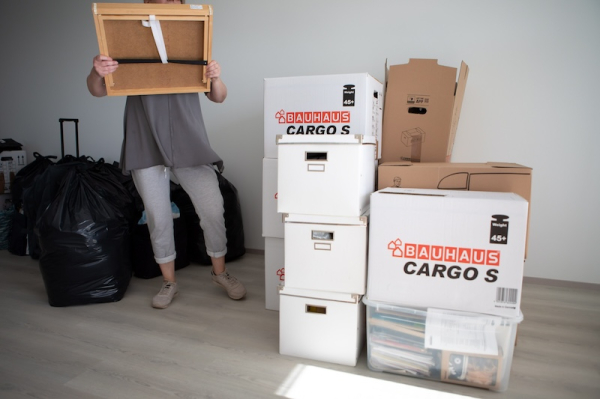High earners living in state-subsidised rental homes in Helsinki

Rents for the highest-earning tenants in state-subsidised rental housing may be raised in the future. Photo: Anni Reenpää / Lehtikuva
- Next Article Public trust in Finnish politicians falls sharply
Thousands of high-income families continue to live in state-subsidised rental housing in Finland, according to a new report by the Ministry of the Environment.
The report found that 24,500 households exceed income limits for subsidised housing, despite the original aim of these homes being to support low-income residents. Some earn more than €12,000 per month.
State-supported rental homes come with capped rents and are partly financed through long-term state loans or interest subsidies. These benefits were introduced to provide affordable housing to low-income families. From January 2024, new income limits apply to those moving into these properties.
But for tenants already in place before this rule, no such income checks are conducted after moving in. As a result, some tenants now far exceed the income threshold.
According to the report, which is based on 2022 income data, 11.7 percent of state-subsidised homes have tenants whose incomes are above the limit. These households include both modest and high-income earners.
The income limits are set near the national median wage. For a single person, the monthly gross income cap is €3,540. A two-adult family is allowed up to €6,020, and a two-adult, two-child household up to €7,270.
The limits are most often exceeded in Helsinki, Espoo and Vantaa. In the capital, nearly 7,400 households living in subsidised housing earn more than the threshold. That amounts to around 15 percent of tenants.
Within Helsinki, the wealthiest districts also show the highest number of breaches. In areas like Kalasatama and Lauttasaari’s Vattuniemi, about one-third of subsidised housing tenants exceed the income cap. In central areas such as Kamppi, Katajanokka, Jätkäsaari, as well as in districts like Pakila, Kulosaari and Arabianranta, over a quarter of tenants earn above the threshold.
Tommi Laanti, a senior adviser at the Ministry of the Environment, said these wealthier areas are also where state-supported housing hosts the highest-income residents.
“Housing production with state support tends to mirror market conditions, so rents in these areas are also comparatively higher,” Laanti said.
The government plans to address the issue by introducing a tiered rent increase model. Rents would be gradually raised if a tenant’s income rises 10–15 percent above the set limit.
For example, a single resident would begin paying more if their gross income exceeds €4,070 per month. About 60 percent of over-the-limit single earners fall into this category.
In two-adult households with children, rent would increase if income rises beyond €7,670 per month. Roughly two-thirds of these families exceed that threshold.
While most breaches are moderate, some households show substantial income levels. According to data compiled by Max Toikka, a researcher at the VATT Institute for Economic Research, 7.7 percent of two-adult families who exceed the income cap earn more than €12,000 per month. That equals 243 households.
“Two adults earning that much while living in subsidised housing is rare but significant when measured against the national income distribution,” Toikka said.
The Ministry also evaluated an alternative model, under which subsidised housing contracts would be fixed-term. If income rose above the threshold during the term, tenants would be required to leave. This approach was deemed too rigid.
“A tiered rent model is more balanced. It avoids unreasonable situations where even a slight rise in income would force someone to move out,” Laanti said.
He also noted the risk of socio-economic segregation if residents were pushed out once they started earning the median wage.
“Mixed-income communities are one of the central goals of state-supported housing,” he said.
Practical questions remain unresolved. Increased rents might encourage higher-income tenants to leave voluntarily, potentially reducing rental revenue.
The report was prepared by Owal Group and Pellervo Economic Research PTT for the Ministry of the Environment and the Centre of Housing Development.
In public interviews conducted by Yle in Helsinki’s Kalasatama, residents generally supported higher rents for high earners rather than fixed-term contracts.
Noora Peitsara, from Helsinki, said a progressive rent model seems fair. “If a small raise meant losing your home, it would discourage people from accepting better jobs.”
Petriina Punna, from Vantaa, said subsidised homes should be reserved for low-income families. “Higher rents for higher incomes make sense, but families should still be able to stay if necessary, for the sake of children’s schools and continuity.”
Tuomas Henttula, from Turku, agreed. “Support should go to those who need it most.”
HT
- Next Article Public trust in Finnish politicians falls sharply
Source: www.helsinkitimes.fi
